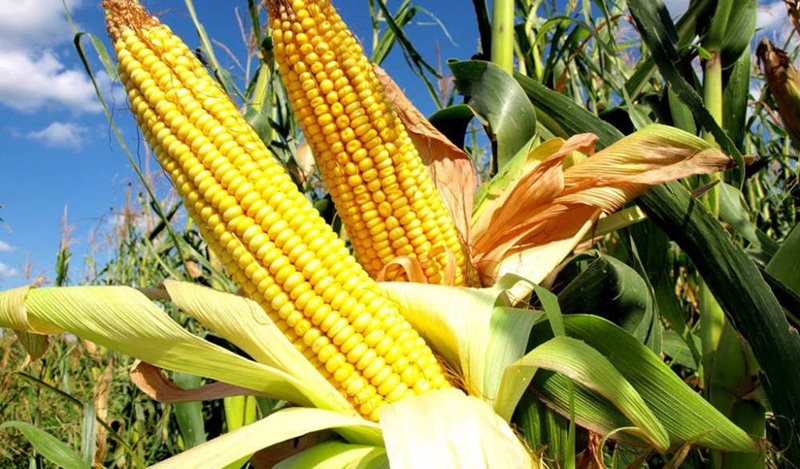Commodities News & Agribusiness
International Maize Price Eases Amidst Global Wheat Supply Chain Trouble
Published
4 years agoon

With global supply chain of wheat still affected by the Russian-Ukrainian war, maize is quickly assuming alternative roles to fill the vacuum.
The development had in past months put pressure on the price of the alternative commodity as suppliers enjoyed massive demands until last recent weeks.
Read Also:
According to data obtained from Mactotrend.net, maize which opened the year at $5.8925 per bushel but later traded high at $8.1575 is now easing as it traded at $7.7725 per bushel to close last week.
This has been ascribed to seasonal supplies from ongoing harvests in Argentina and Brazil which has help ease market pressure on international supply of maize.
Maize which is a practical alternative for wheat has experienced an increase demand due to the price rally for wheat emanating from the Russia-Ukraine crisis.
Tapping Benefits of the War
Countries with foresight are seeing opportunity to rev up production of commodities affected by the war for global supply and cashing in big.
For instance, Thailand has recently shown enthusiasm to benefit from agricultural commodity supply chain disruptions.
As commodity prices surge, alternative suppliers and close substitutes are being sought out.
Export of Thailand’s major products: sugar, chicken and rice have been said to surpass the January forecast as exports of sugar and rice are expected to grow by 40% and eight million metric tons.
The Nigerian Market
The Nigerian commodity market activity is slowly being restored to the pre-Ramadan tempo. The market experienced influx of grains from Cameroon which significantly eased open market prices, according to the AFEX weekly report.
However, this price easing was not sustained as commodity prices have begun to surge again.
Prices of commodities on the Exchange gained W-O-W except Paddy rice and Cashew which fell by 0.41% and 0.76% respectively. All prices on the Exchange gained Y-t-D except for Ginger and Sesame which remained unchanged.
While other commodities gained W-o-W in the open market, Cocoa, Cashew and Soybean fell by 2.73%, 0.47% and 0.41% respectively. Y-T-D, Maize and Sorghum fell by 15.02% and 12.36% respectively while Cashew and Paddy rice gained by 32.72% and 14.20%.
Most Prices in the International market fell W-O-W while Y-T-D, Cocoa, Cashew and Ginger fell by 7.43%, 3.71% and 0.21% respectively.
In West Africa, the production outlook has brightened for mid-crop cocoa harvest as drought conditions turn around with recent heavy rainfall in Ghana and Cote D’Ivoire.
Other Commodities and other assets
W-o-W, the S&P GSCI Agriculture index, ACI and AEI fell by 0.07%, 2.10% and 2.63% respectively while the ASI gained by 2.27%.
On a S-T-D basis, the S&P GSCI Agriculture index, ACI and AEI fell by 0.1%, 2.28% and 2.83% respectively while the ASI gained by 2.81%.
Maize, Sorghum, Cashew and Paddy rice account for 95.16%, 1.55%, 1.30% and 1.30% respectively of the total contracts traded on the Exchange during the week.
Global market outlook
Meanwhile, experts held that the global commodity markets prices are positioning high ahead as the markets are watching weather and planting progress plus world events disrupting commodity supply chains.
Soy contracts for July scored the highest weekly close for the year due to high demand. In West Africa, production outlook has brightened for mid-crop cocoa harvest as drought conditions turn around with recent heavy rainfall in Ghana and Cote D’Ivoire. This is significant as both countries jointly account for 50% of global outputs.
Share this:
- Click to share on X (Opens in new window) X
- Click to share on Facebook (Opens in new window) Facebook
- Click to share on WhatsApp (Opens in new window) WhatsApp
- Click to share on Pocket (Opens in new window) Pocket
- Click to share on Telegram (Opens in new window) Telegram
- Click to email a link to a friend (Opens in new window) Email
- Click to share on LinkedIn (Opens in new window) LinkedIn
You may like


Three Reasons Oil Price Increase is a Curse to Nigeria – Finance Minister


Everton suspends sponsorship deals with Russian firms


Oil price jumps to nearly $114 as Russia-Ukraine war triggers fears


CBN moves to stop $2bn annual capital flight to wheat importation


Nigeria’s new cassava policy to stem $6.1bn annual wheat importation


CBN moves to impose forex restriction on wheat, sugar importation












